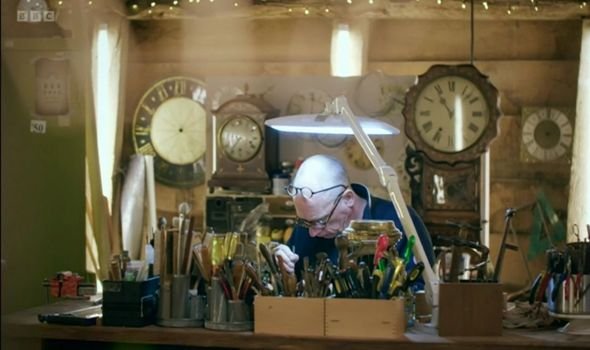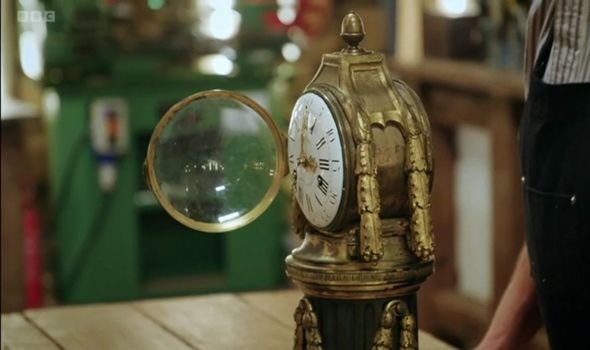Repairing antique clocks is a fascinating yet challenging endeavor. These timepieces, often cherished for their historical and sentimental value, come with their own set of unique obstacles. Understanding these challenges can help you better navigate the intricacies of clock restoration and ensure that your antique clocks are preserved and functioning beautifully. Here’s a closer look at some of the primary challenges faced when repairing antique clocks.
1. Sourcing Replacement Parts
One of the most significant challenges in repairing antique clocks is finding suitable replacement parts. Many antique clocks were crafted with components that are no longer manufactured, making it difficult to source exact matches. Here are some tips for overcoming this obstacle:
- Custom Fabrication: In some cases, parts may need to be custom-made by skilled craftsmen or clock repair specialists.
- Parts Reproduction: Some companies specialize in reproducing parts for antique clocks, though these may not always be exact matches.
- Salvaging: Occasionally, parts can be salvaged from other antique clocks of similar make and model.
2. Understanding Complex Mechanisms
Antique clocks often feature intricate and elaborate mechanisms that can be challenging to understand. These mechanisms may include unique gears, escapements, and other components that are not commonly found in modern clocks. To address this challenge:
- Consult Manuals and Documentation: Historical manuals and technical documents can provide valuable insights into the mechanisms of specific antique clocks.

- Seek Expert Advice: Experienced clock repair specialists can offer guidance and assistance with complex mechanisms.
- Practice Patience: Repairing these mechanisms may require meticulous attention to detail and patience.
3. Handling Fragile Components
Antique clocks often contain delicate and fragile components that require careful handling. Over time, materials such as brass and wood can become brittle, making them prone to damage. To manage this challenge:
- Use Gentle Techniques: Handle components with care and use specialized tools designed for delicate work.
- Preserve Original Parts: Avoid replacing original parts unless absolutely necessary, as this can affect the clock’s value and authenticity.
- Protect Components: Store and transport fragile components in protective cases or padding.
4. Addressing Wear and Tear
Antique clocks are subject to years of wear and tear, which can affect their functionality. Common issues include worn gears, dried-out lubrication, and rust. To address wear and tear:
- Regular Maintenance: Perform regular maintenance to keep the clock in good working condition and prevent further deterioration.
- Professional Restoration: In some cases, professional restoration may be required to address severe wear and tear.
5. Preserving Historical Integrity
Maintaining the historical integrity of an antique clock is crucial for preserving its value and authenticity. This challenge involves:
- Avoiding Over-Restoration: Be cautious not to over-restore or alter the clock in ways that could compromise its historical value.
- Documenting Changes: Keep detailed records of any repairs or modifications made to the clock.
6. Navigating Historical Variations
Different periods and manufacturers had varying standards and designs for clock mechanisms. Understanding these historical variations can be challenging, particularly if you’re unfamiliar with the specific period or maker of the clock. To overcome this:
- Research Historical Context: Study the historical context of the clock, including its manufacturer and the era in which it was made.
- Connect with Experts: Reach out to historians or specialists in antique clocks for insights and advice.
7. Dealing with Chemical and Environmental Damage
Antique clocks can suffer from chemical and environmental damage, such as rust, corrosion, and discoloration. Addressing this type of damage requires:
- Specialized Cleaning: Use appropriate cleaning methods and solutions to remove rust or corrosion without damaging the clock.
- Environmental Controls: Store and display antique clocks in environments that minimize exposure to moisture, chemicals, and extreme temperatures.
Conclusion
Repairing antique clocks presents a unique set of challenges, from sourcing rare parts to understanding complex mechanisms. By approaching these challenges with care, patience, and the right resources, you can effectively restore and preserve these treasured timepieces. Whether you’re an experienced clock repair technician or a passionate collector, navigating these obstacles with knowledge and expertise will help ensure that your antique clocks remain functional and beautiful for generations to come.





Der maximale Betrag für den ersten Willkommensbonus beträgt 1000 EUR.
Er umfasst 100% und 200 Freispiele. Der Neukundenbonus ist für alle verfügbar.
Der maximale Betrag für den Willkommensbonus beträgt 500 EUR.
Sofortige Gewinnauszahlung
Live-Chat ist oft die schnellste und einfachste Möglichkeit, um
sofortige Hilfe von einem geschulten Vertreter rund um die Uhr zu erhalten. Viele dieser Websites verfügen über eine Vielzahl von Support-Methoden und -Diensten, mit denen Sie
bei Fragen oder Problemen Hilfe erhalten können. Zusätzlich zu Willkommensboni gibt es oft laufende Promotionen, wie zum
Beispiel Reload-Boni, Loyalty-Programme und Turniere, die für
bestehende Kunden zusätzliche Vorteile bieten können. Online Casinos ohne Verifizierung bieten eine
Vielzahl von Boni und Promotionen für Spieler, darunter auch Willkommensboni.
100 % bis zu 500 € + 200 Freispiele + eine Bonuskrabbe sind zu
holen. Wenn Sie sicher, schnell und ohne sensible Bankdaten zahlen wollen, sind Sie hier richtig.
Auch Playio zählt zu den Anbietern mit gültiger Glücksspielizenz der Autonomen Insel
Anjouan, Union der Komoren.
References:
https://online-spielhallen.de/lukki-casino-mobile-app-dein-ultimativer-leitfaden/
Unser Team sucht aktiv nach verdächtigem Verhalten und
verwendet fortschrittliche Verifizierungssysteme, um zu verhindern, dass
Personen unter 18 Jahren auf unsere Site gelangen. Sie können die Selbstausschlussfunktion nutzen,
um für eine bestimmte Zeit nicht mehr in unser Casino zu
gehen, wenn Sie sich zu irgendeinem Zeitpunkt
unsicher fühlen. Diese Methode stellt sicher, dass Sie immer kluge Entscheidungen über Ihre Grenzen treffen.
Unser Team ist rund um die Uhr für Sie da–senden Sie uns jederzeit
eine Nachricht, um Unterstützung zu erhalten. Admiral Casino ist
die beste Wahl, da es eine schöne Atmosphäre und einen großartigen Kundenservice bietet und
die Spieler an die erste Stelle setzt. Transaktionen sind sicher, Werbeaktionen sehen aus, als
wären sie speziell für Sie gemacht worden, und mobiles Spielen funktioniert
einwandfrei. Außergewöhnlicher Kundenservice ist ein Eckpfeiler der offiziellen Website des Admiral Casinos und bietet rund um die Uhr zeitnahe Hilfe.
Darüber hinaus erhalten Sie personalisierte Angebote, die auf Ihre Favoriten und
Spielhäufigkeit zugeschnitten sind.
References:
https://online-spielhallen.de/boaboa-casino-login-ihr-tor-zur-aufregenden-casinowelt/
Enjoy an exclusive 10% discount on all specials when you dine as
a member
Cucumber ribbon, cherry tomato, feta cheese, pickled red onion,
mesclun lettuce, ranch dressing Our facilities are world-class,
as is our catering and breathtaking beachfront location…no
wonder our venues are popular with function and event organisers worldwide.
Mindil Beach Casino Resort is the premium business and events destination in the Top End and features Darwin’s
only five-star resort and four-star hotel. Relax and enjoy appetizers that are perfect for sharing,
award-winning cocktails (or maybe a top-shelf whisky), and listen to live tunes from NT’s
most talented musicians. Sandbar is the place to be for after-work drinks or simple, relaxed dining with friends.
Each room also includes a private patio, offering spectacular garden or ocean views.
Located on the ground level of the hotel, these spacious rooms are fully equipped with a Japanese-inspired spa bath and a separate spacious corner shower.
Superior Spa Rooms offer guests the ultimate relaxation experience.
All rooms feature a private balcony, stylish ensuite bathroom, complimentary WiFi and a
state-of-the-art flat screen television. The Garden Grand Suite
offers guests an experience to remember. Use your points for Xtra Credits,
dining, hotel stays and more.
References:
https://blackcoin.co/best-10-online-casino-bonuses/
Our process involves verifying the age of all players during registration to prevent underage gambling.
We offer a variety of tools designed to help
players track their gaming habits and spending.
Recognising the importance of responsible gaming, we provide resources
and information to help players manage their gaming activities effectively.
At Wolf Winner, we understand that having reliable customer support
is crucial for an enjoyable gaming experience.
With our commitment to mobile excellence, Wolf Winner
guarantees an engaging and fun gaming experience on the
go.
Keep it fun, stay safe, and always know support is available if you need it.
Wolf Winner Casino AU is committed to providing
tools that help you stay in control — from deposit limits to self-exclusion options.
It’s important to recognise that gambling can become addictive if not managed carefully.
References:
https://blackcoin.co/crownplay-casino-majestic-gambling-for-australia/
Players at Intensity Casino benefit from numerous secure deposit and withdrawal methods.
From traditional 3-reel pokies to the latest video slots featuring immersive graphics and bonus rounds, the game library is diverse and
engaging. You may opt out at any time.
YouTube’s owner Google announced in November 2015 that they would help cover the legal cost in select
cases where they believe fair use defenses apply.
In August 2008, a US court ruled in Lenz v.
Universal Music Corp. that copyright holders cannot order
the removal of an online file without first determining whether
the posting reflected fair use of the material. From 2007 to 2009 organizations including Viacom, Mediaset, and the English Premier League have filed lawsuits against YouTube, claiming that it has
done too little to prevent the uploading of copyrighted material.
On August 5, 2015, YouTube patched the formerly notorious behavior which caused a video’s view count to
freeze at “301” (later “301+”) until the actual count
was verified to prevent view count fraud.
References:
https://blackcoin.co/woospin-premier-pokies-paradise-for-aussie-players-in-2025/
In this Lucky Green Casino review we explore how these specs translate to your real-world
player experience. Lucky Green casino offers the perfect blend of entertainment, security,
and value. Ready to experience world-class gaming with Australian-friendly features?
Join thousands of players winning big at Lucky Green Casino Australia Feel the rush and embrace your luck in a setting
that values excitement just as much as fair play.
We experienced issues with Lucky Green, but those
issues weren’t enough to scare us away. Becoming a
gambler at this casino is as simple as inputting your information into
a form. We love the different features, and it’s all
these options that make the site special.
With enticing bonuses, a myriad of games, and a commitment to
player satisfaction, Lucky Green is your premier destination for an unforgettable Australian online casino adventure.
With its vast collection of pokies, generous bonuses, reliable payments, and strong security measures, it offers
everything you’d expect from a world-class gaming platform.
Additionally, the limited payment methods, the limited live
games and the lack of a dedicated mobile app have been noted by a few players.
The casino has gathered feedback from a mix of players, with many appreciating the
user-friendly interface, a wide selection of games, and
the generous bonuses.
References:
https://blackcoin.co/vacation-like-a-star-planet-hollywood-resort-casino-las-vegas/
us online casinos that accept paypal
References:
https://qrlinkgenerator.com/darryl40v61967
online casino with paypal
References:
https://firstcanadajobs.ca
online betting with paypal winnersbet
References:
http://cheongchunplant-as.com
paypal casino usa
References:
http://seoul911.com/bbs/board.php?bo_table=free&wr_id=28204
online casino uk paypal
References:
https://www.jobv3.com/companies/best-online-casino-payouts-in-2025-highest-paying-sites-98/